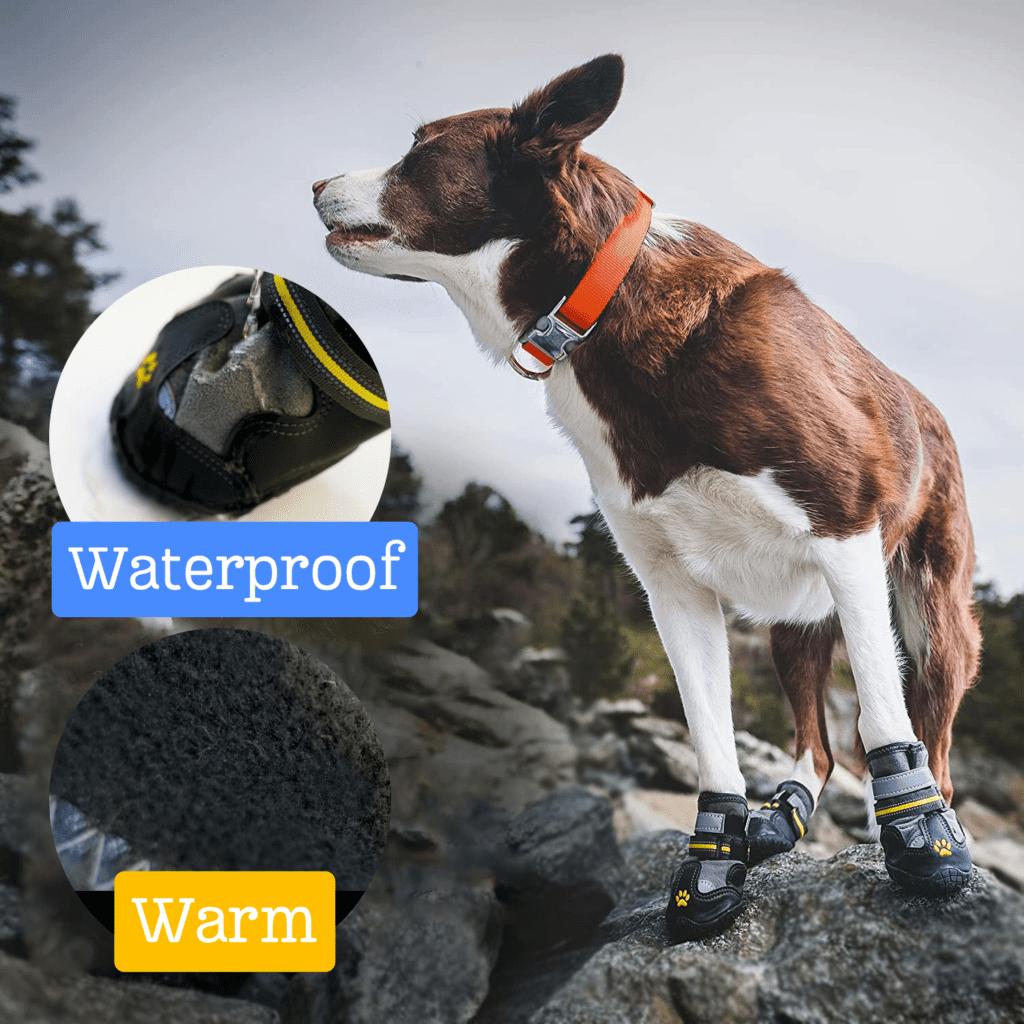As the temperature drops during winter, it’s important to take your dog on walks to ensure they get enough exercise. However, it’s important to keep in mind that your dog’s paws can be sensitive to the cold and ice, so you’ll need to take extra precautions when walking them during this time. By considering your dog’s breed, age, health, and weather conditions, you can ensure enjoyable and safe outdoor adventures for both of you.
Breed, Age, and Fitness Level:
Different dog breeds have varying exercise needs, which also apply during winter walks. High-energy breeds like Border Collies or Siberian Huskies may require more extended walks to burn off excess energy and stay mentally stimulated. Conversely, smaller or less active breeds like Bulldogs or Pugs may have shorter endurance and prefer shorter walks. Consider your dog’s age and fitness level as well. Young and active dogs may require more exercise, while older or less mobile dogs might benefit from shorter, gentle strolls.
Weather Conditions and Temperature:
The weather conditions and temperature play a significant role in determining the duration of your dog’s winter walk. Extremely cold temperatures, snowstorms, or icy conditions can be challenging for dogs, especially those with short coats or lower tolerance to cold. It’s important to monitor your dog’s behavior and signs of discomfort, such as shivering, lifting paws, or reluctance to continue walking. In severe weather, it’s advisable to keep walks shorter and provide additional warmth and protection, such as doggy sweaters or booties.
Consider Your Dog’s Health:
Your dog’s overall health and any pre-existing conditions should be taken into account when deciding on the duration of winter walks. For example, dogs with arthritis or joint issues may need shorter walks to avoid discomfort or exacerbating their condition. Adjust the duration of the walks accordingly to best accommodate their needs.
Read Your Dog’s Body Language:
Your dog’s body language is a powerful indicator of their comfort level and enjoyment during winter walks. Keep a close eye on their behavior throughout the walk. Signs of enthusiasm, alertness, and engagement indicate that your dog is enjoying the outing. On the other hand, signs of fatigue, slowing down, excessive panting, or seeking shelter indicate that they may need a break or a shorter walk. Always prioritize your dog’s well-being and adjust the duration of the walk as necessary.
Gradual Adaptation and Safety Precautions:
If your dog is not accustomed to winter walks or colder temperatures, it’s important to introduce them gradually. Start with shorter walks and gradually increase the duration as they become more acclimated. Keep in mind that paw care is essential during winter walks. Salt, ice, and snow can be harsh on your dog’s paws, so consider using paw balm or protective booties to help prevent irritation or injuries. This is especially important if you live in an area that gets a lot of snow and ice. Make sure your dog has access to water during their walk. They may not want to drink cold water, so consider bringing a small bowl of warm water with you.
Conclusion:
Determining the ideal duration for winter walks with your dog requires careful consideration of various factors. Take your dog’s breed, age, fitness level, health, and the prevailing weather conditions into account. As a responsible pet owner, prioritize your dog’s well-being and comfort during the colder months. Remember to read your dog’s body language and adapt the duration of the walks accordingly. By finding the right balance, you can provide enjoyable and safe outdoor adventures for your beloved companion while keeping them healthy and happy throughout the winter season.

